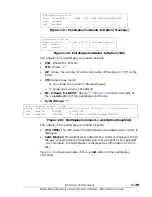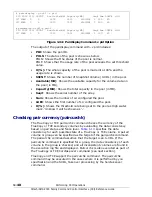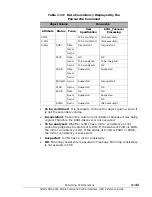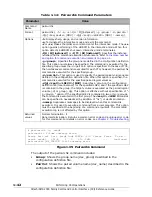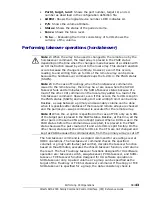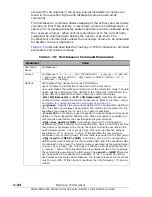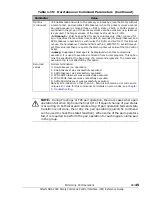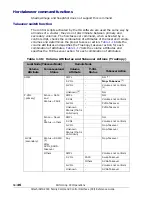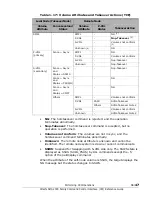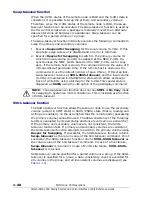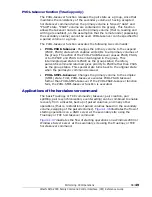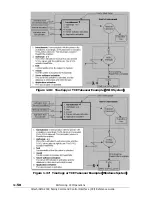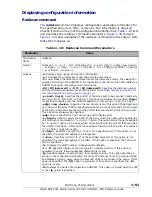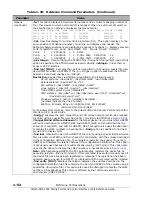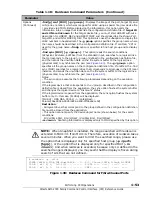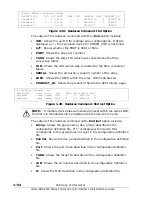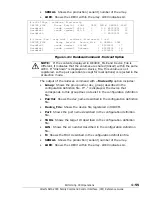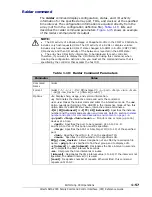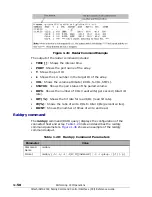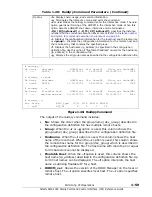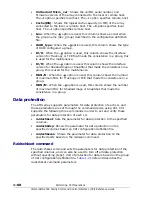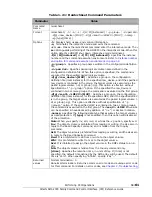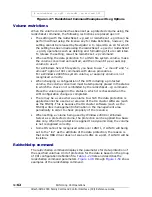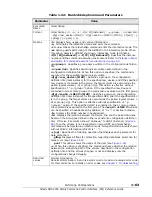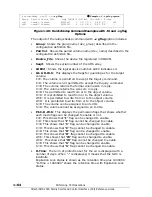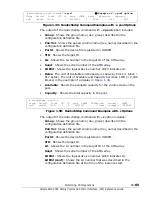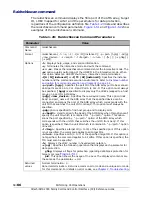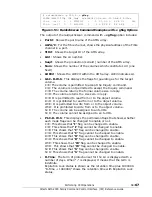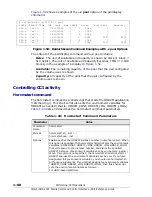
Performing CCI Operations
1–53
Hitachi AMS 2000 Family Command Control Interface (CCI) Reference Guide
•
Figure 1-38: Raidscan Command for Fibre-Channel Ports
Options
(Continued)
-find[g] conf [MU#] [-g <group>]: Displays the image of the port, target ID, and
LUN (array notation) which was mapped for LDEV using a special file (raw device file
) provided via STDIN. Before displaying the information, this option edits the
information into an image that looks like the configuration definition file. If target ID
and LUN are Unknown for the target device file, you must start HORCM without a
description for HORCM_DEV and HORCM_INST, and should describe the shown Port,
target ID, and LUN for HORCM_DEV. This option also uses the -fx option to display the
LDEV numbers in hexadecimal. The -g group option specifies the group name where
the name should be described in the configuration definition file. If omitted, “VG” is
used for the group name. -findg option is specified to find host group and to display
LUN.
-find sync [MU#] [-g <group>]:
This option reads the search conditions
($Physical, $Volume, $LETALL) from the standard input, searches for a logical drive
that corresponds to the group (<group>) defined in the configuration definition file,
and then sends the unwritten data on the file system buffer to the logical drive
(physical disk) to synchronize the pair (see
). The -g <group> option
specifies all the group names on the configuration definition file. If omitted, the -find
sync [MU#] searches for a logical drive that corresponds to all groups in the CCI local
instance, and sends the unwritten data on the file system buffer to the logical drive
(physical disk) to synchronize the pair (see
Notes:
- The sync option executes the following procedures depending on the execution
condition.
If the logical device that corresponds to the <group> described in the configuration
definition file is closed from the application, the sync option flushes the system buffer
and changes the logical device to “Dismount” status.
If the logical device is opened from the application, the sync option flushes the system
buffer only. In this case, [FLUSH] will be displayed.
[FLUSH] : ORA ORA_000[-1] -> \Vol44\Dsk0 :
Volume{56e4954a-28d5-4824-a408-3ff9a6521e5d}
Restriction:
- All logical drives that correspond to the group defined in the configuration definition
file must be closed from the application.
- This option cannot specify the device object name (shown below) for the search
conditions:
D:\Vol(Dms,Dmt, Dmr)X\DskY, \Vol(Dms,Dmt, Dmr)X\DskY
-m <mun>:
Scanning information is displayed only for MU# specified by this option.
Table 1-18: Raidscan Command Parameters (Continued)
Parameter
Value
NOTE: When SnapShot is installed, the range searched with raidscan is
extended to MU#=31 from MU#=0. Therefore, execution of raidscan takes
several minutes. When you want to limit the searched range, please use
the option that is displayed only for specified host group (-p <port>
[hgrp]), or the option that is displayed only for specified MU# (-m
<mun>). And when raidscan is executed, because only LU defined in the
searched range is displayed, you may seem that the display is frozen during
search of LUs that are not defined.
# raidscan -p cl1-a
PORT# /ALPA/C,TID#,LU#.Num(LDEV#....)...P/S, Status,LDEV#,P-Seq#,P-LDEV#
CL1-A / ef/ 5, 1, 0-0.1(0).............P-VOL ---- ----, ----- ----
CL1-A / ef/ 5, 1, 1-0.1(1).............SMPL ---- ----, ----- ----
Summary of Contents for AMS 2000 Series
Page 6: ...vi Table of Contents Hitachi AMS 2000 Family Command Control Interface CCI Reference Guide ...
Page 244: ...4 18 Command options Hitachi AMS 2000 Family Command Control Interface CCI Reference Guide ...
Page 261: ...1 Hitachi AMS 2000 Family Command Control Interface CCI Reference Guide ...

